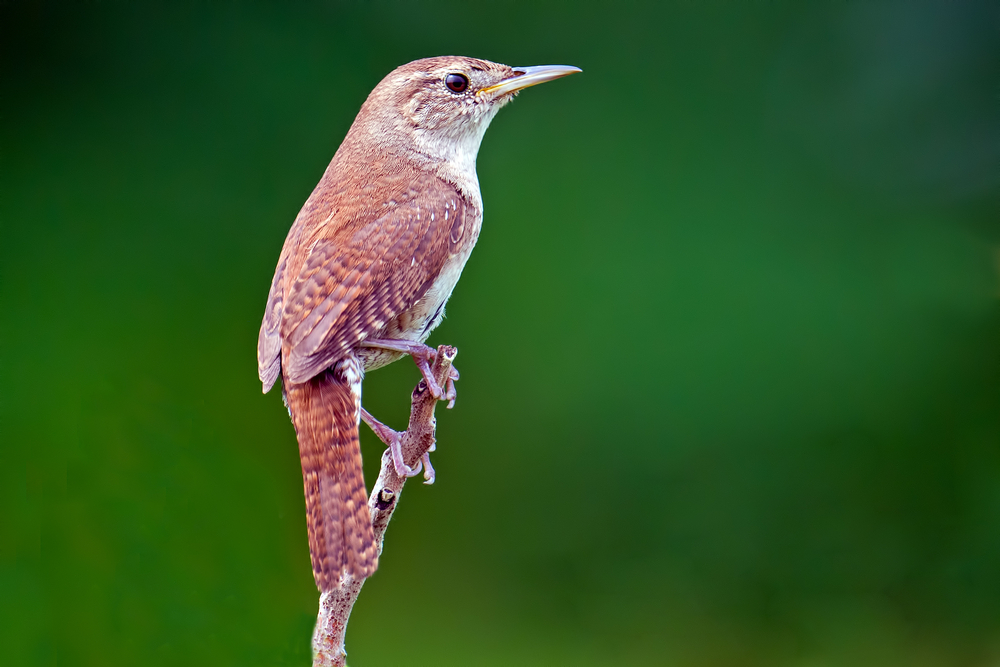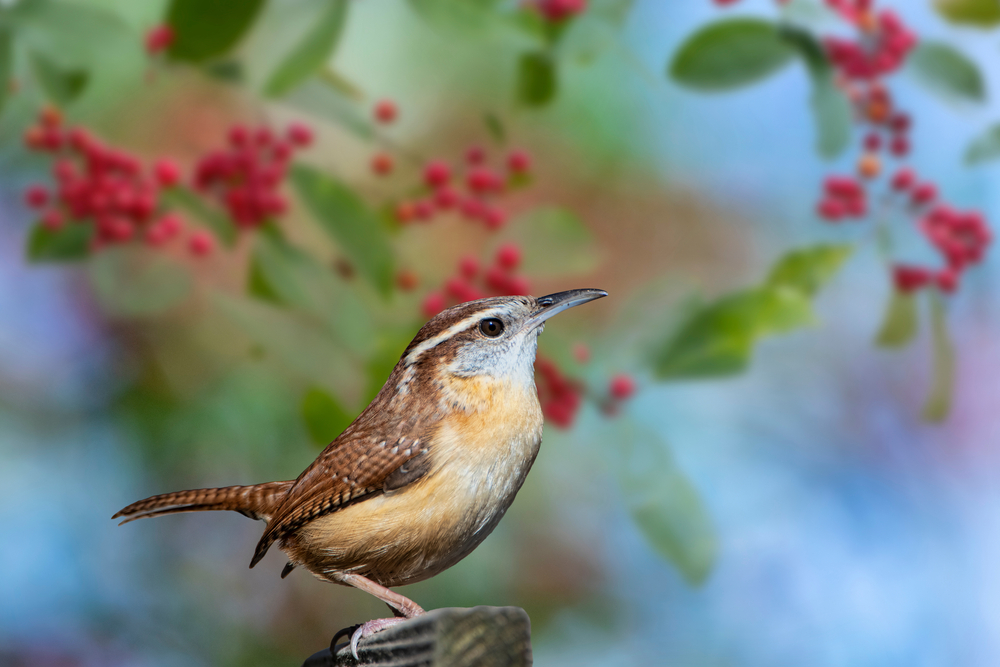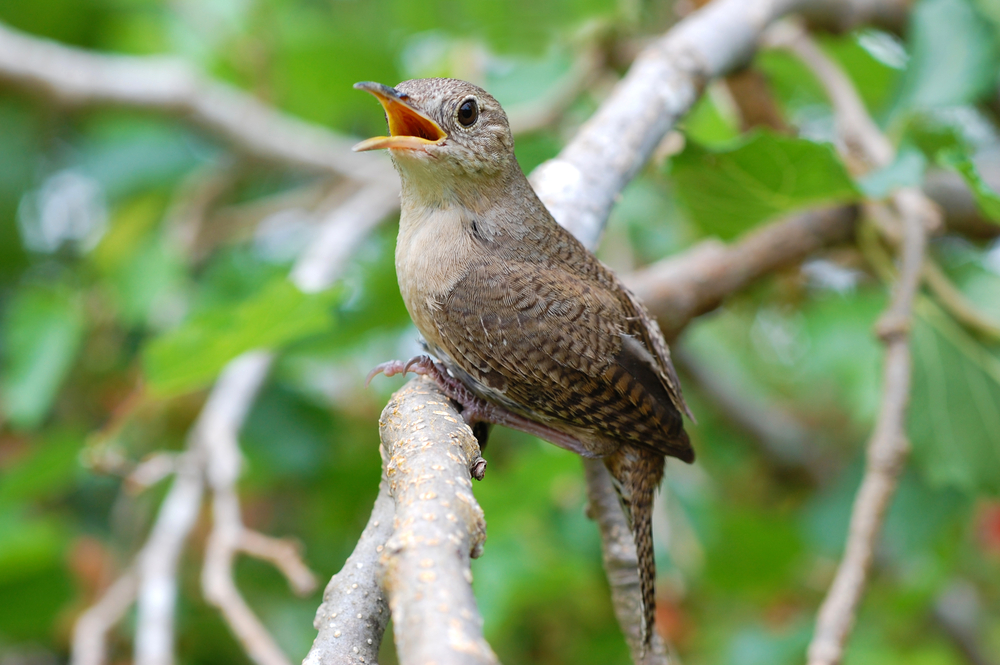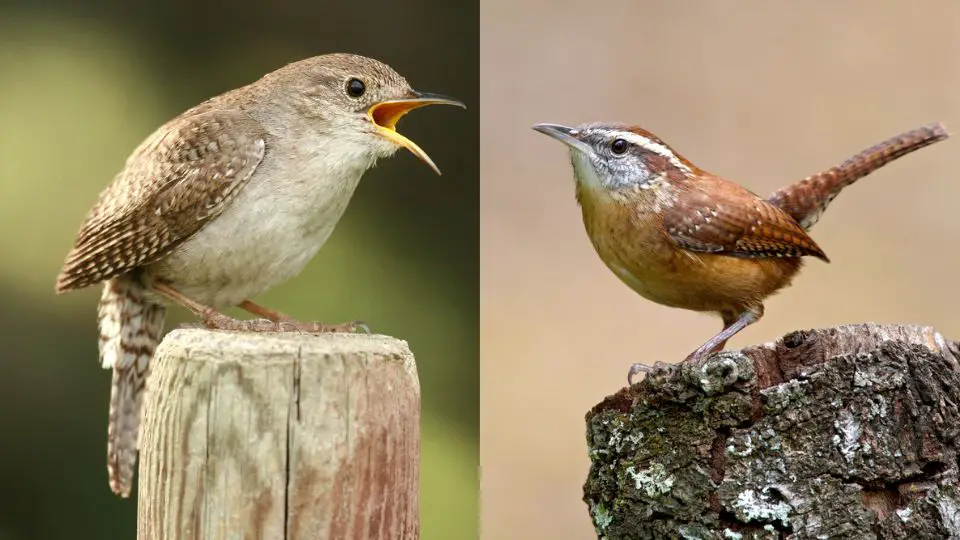The Carolina Wren and House Wren are Passeriformes and part of the Troglodytidae family. They're brown, avid cavity-nesting birds, and their habitats often overlap. While the Carolina Wren resides in the eastern US, the House Wren is actually one of the most widespread Wrens found in North America.
Despite sometimes overlapping habitats, changes in migration patterns, distinctive coloring, diet, and songs make it easy to quickly tell these two doppelgangers apart.
Appearance
The House Wren (Troglodytes aedon) and the Carolina Wren (Thryothorus ludovicianus) are similar-looking North American birds, at least at a glance. They’re both brown birds, but if you pay close attention to the pattern and color of their feathers, they boast obvious differences.
Overall, the Carolina Wren has a coloring that is richer and more colorful. It has a creamy shade of brown on its underparts and an unmistakable white stripe on its eyebrows. Its upper parts and very short tail boast a reddish-brown color with delicate speckling on its wing bars, similar to that of a Marsh Wren or Cactus Wren.
The House Wren, on the other hand, has a much more muted coloring like that of a House Sparrow. It has buffy brown and white color on its upper parts, underparts, and delicate speckling on its wing bars. The easiest way to spot the true difference between these two birds is by looking at their eyes. While the Carolina Wren has a white stripe above its eyes, the House Wren doesn’t.

Diet
While their diets are similar, their migration patterns slightly alter their diets. The House Wren lives on a diet of primarily insects and dines on things like caterpillars, crickets, and grasshoppers year-round. Due to its protein-rich insect diet, these migratory songbirds migrate south to Mexico in search of food sources once the temperatures plummet in the winter.
The Carolina Wren has a much more diversified diet. Since flocks of Carolina Wrens stick it out during the winter, they supplement their diet with plant-based foods such as sunflower seeds, thistle, acorns, and berries.
In the breeding months, they stick to a protein-rich diet and transition to berries and nuts in the winter. While the Carolina Wren and the House Wren eat from backyard birdfeeders, the Carolina Wren is more likely to show up at backyard birdfeeders and suet feeders during the cold winter.


Habitat
Sometimes, the easiest way to tell the difference between these species of Wrens is by location. The habitat of these two birds overlaps in some areas of North America; the range of the Carolina Wren isn’t quite as expansive. The Carolina Wren lives on the east coast, primarily in deciduous forests in the Appalachian mountains.
Unlike the House Wren, the Carolina Wren does not migrate. If you spot a brown Wren at your feeders this winter, odds are it’s a non-migratory Carolina Wren. House Wrens, on the other hand, are migratory.
During their breeding season, house wrens reside in most parts of the continental United States, from California down to Florida. When the breeding season is over, they pack it up and head south to Mexico and Central America for their wintering grounds. Unlike the Carolina Wren, the House Wren is only spotted by birdwatchers in North America during the breeding season.
Songs
While they may look quite similar and belong to the same family of songbirds, their songs are entirely different! The House Wren song is a blurry jumble of warbling notes that last up to 12 seconds. Often, male and female House Wren songs comprise a jumbled mess of frantic notes that don’t have much musicality. The call of the House Wren isn’t the most alluring in the springtime.
The Carolina Wren, however, gives the pleasant notes of the American Robin a run for its money. Their song is clear, crisp, and sing-songy whistling quality that sounds like it’s saying tea kettle. Of the two songbirds, the Carolina Wren wins the singing contest!

How To Attract House Wrens and Carolina Wrens
Both species of Wrens are avid cavity-nesting birds. However, unlike other cavity-nesting small birds, these wrens prefer open cavities such as mailboxes, flower pots, or homemade birdhouses. They often prefer man-made nesting boxes to naturally occurring holes and crevices found in dead trees or old Woodpecker nests.
If you place a wren nesting box in your backyard, be prepared for stiff competition! Not only will Carolina and House Wrens flock to your nesting box, but other species of birds may take up residences, such as Bluebirds and similar species of Wrens like the Winter Wren.

